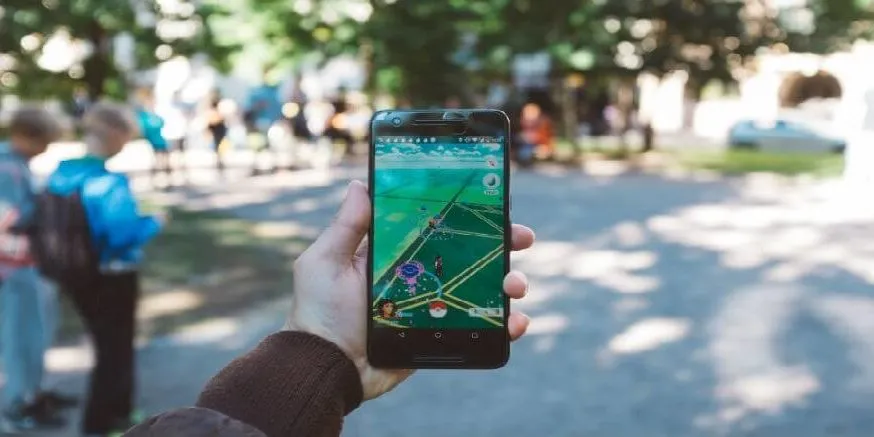Of the App Store’s 2.2 million mobile apps, 20% are relatively new, released within the past year. Some have predicted that the App Store’s selection will top 5 million by the time 2020 arrives. And that’s just the iOS-compatible apps; there are also hundreds of thousands of Android apps that will soon be in development. A large portion of these apps will include some highly sophisticated technology, such as augmented reality (AR) and virtual reality (VR).
As you’re planning for the development of your new mobile app, you may find yourself faced with an important decision as you weigh augmented reality technology vs. virtual reality technology. So how are these two pieces of technology used and how can you determine which is right for your app’s target audience?
Augmented Reality vs. Virtual Reality: The Basics
Augmented reality and virtual reality are similar forms of the same technology, although understanding the differences is important if you’re in the pre-development phase. Virtual reality means creating an interactive, fully-digital environment. Most virtual reality apps are games, like The Sims, although it’s possible to create a virtual reality environment for more practical uses such as 3D modeling and engineering.
On the other hand, augmented reality technology involves the addition of interactive digital elements, which are blended with reality via a real-time camera input. Pokemon GO is a well-known example of an augmented reality app, as you have real-time footage of the world around you, with digital characters scampering about.
Augmented Reality vs. Virtual Reality: Evaluating Your Needs
When choosing the right type of technology for your new mobile app, you’ll need to identify your needs and determine how they relate to AR and VR. Consider the following questions:
- Do you need to create a fully virtual environment? Or can your app capture and utilize real-time footage of a user’s environment?
- If your app will capture footage in real-time, will it be of consistently usable quality for your app’s needs and the user’s needs? Or are there too many potentially-problematic variables?
- Will the real-time footage create the desired user experience once you augment that view with virtual elements?
- Are users expecting the app to be true-to-life and/or representative of current real-life conditions?
AR apps can capture footage, which is then augmented with digital elements in real-time. But in order for this technology to be practical, your app must be able to account for variables. For example, say you’re building an app that allows users to hold up their phone and view reviews of any restaurants that are in view. This app would use GPS data and real-time footage from the device’s camera; digital elements would overlay that real-time footage. But what happens when it’s dark? Will there be sufficient input to generate an accurate, user-friendly digital overlay? Or what if a user wanders into an urban canyon? Will most users have a device with dead reckoning sensors or alternate connectivity capabilities that would allow the app to continue being functional? You must carefully consider these variables or you could end up with an app that’s simply not practical.
VR apps, on the other hand, do not rely on real-time footage. The entire virtual environment is digitally rendered, so you can eliminate a major variable from the equation. But the tradeoff is that this virtual environment is far more complex to develop and manage. For instance, in the case of the aforementioned restaurant reviews app, you would need to ensure that your virtual world matched reality. So if a restaurant underwent a complete exterior remodel, your virtual environment would need to be updated to reflect this (lest you risk confusion amongst users).
Virtual reality is very diverse, as it can simulate the real world or it can craft an entirely unique environment. Generally, if you’re seeking to accurately replicate the real world, then augmented reality development is the more practical choice. If your goal is to create a theoretical environment or an environment that exists independently from “real life,” (i.e., real-world events do not impact this environment) then VR technology is probably more effective for your needs.
Augmented Reality vs. Virtual Reality: Cost
App cost is clearly a concern during the pre-development planning phase. Augmented reality apps tend to be less expensive to develop since you’re creating a limited number of digital elements, whereas virtual reality requires making an entirely digital world.
In terms of maintenance, a VR mobile app that mimics reality would be the most costly. That’s because this app requires continual updates to ensure that the virtual environment reflects the actual environment. In this scenario, augmented reality development might be a better choice since you could simply capture and manipulate footage of the real world instead of re-creating it.
Compared to a VR mobile app that makes a unique world, though, augmented reality apps are more likely to require relatively minor updates to improve accuracy and user experience since you have many variables at play. For example, you may build a mobile app that’s designed to capture a person’s measurements for a custom garment. But since the app performs in a dynamic, ever-changing environment, it’s possible the app may lose its accuracy when the device is held in a particular position. This is an issue that would need to be identified and then remedied. VR apps tend to require fewer updates of this nature since you’re architecting a virtual environment from the ground up and have the ability to account for most variables during the initial development process. But even with regular revisions, the overall cost of an AR app is apt to be far lower than the price tag associated with a virtual reality app.
Every piece of technology has its own unique challenges and requirements; it’s important that you fully understand these issues before you commit to an app development project. Working with an experienced AR and VR app developer is beneficial in this regard since you’ll have a seasoned team of augmented and virtual reality experts who can identify potential pitfalls well in advance. This is just one of the many perks you’ll enjoy while working with the 7T team. We can help you compare AR vs. VR for your development project and help you determine which technology is right for your business.
At 7T, we focus on innovation. This means we have extensive experience with cutting-edge augmented reality apps, virtual reality apps, predictive analytics and apps that leverage artificial intelligence technology. We take a client-centric approach as we establish a game plan for the development of your mobile app. Our team will ensure that you understand the advantages and disadvantages of your preferred technology before you commit.
7T is based in Dallas, although we also have regional offices in Austin and Houston. Our elite team of developers also collaborates with clients across the United States, so we invite you to contact us today to discuss your project.











